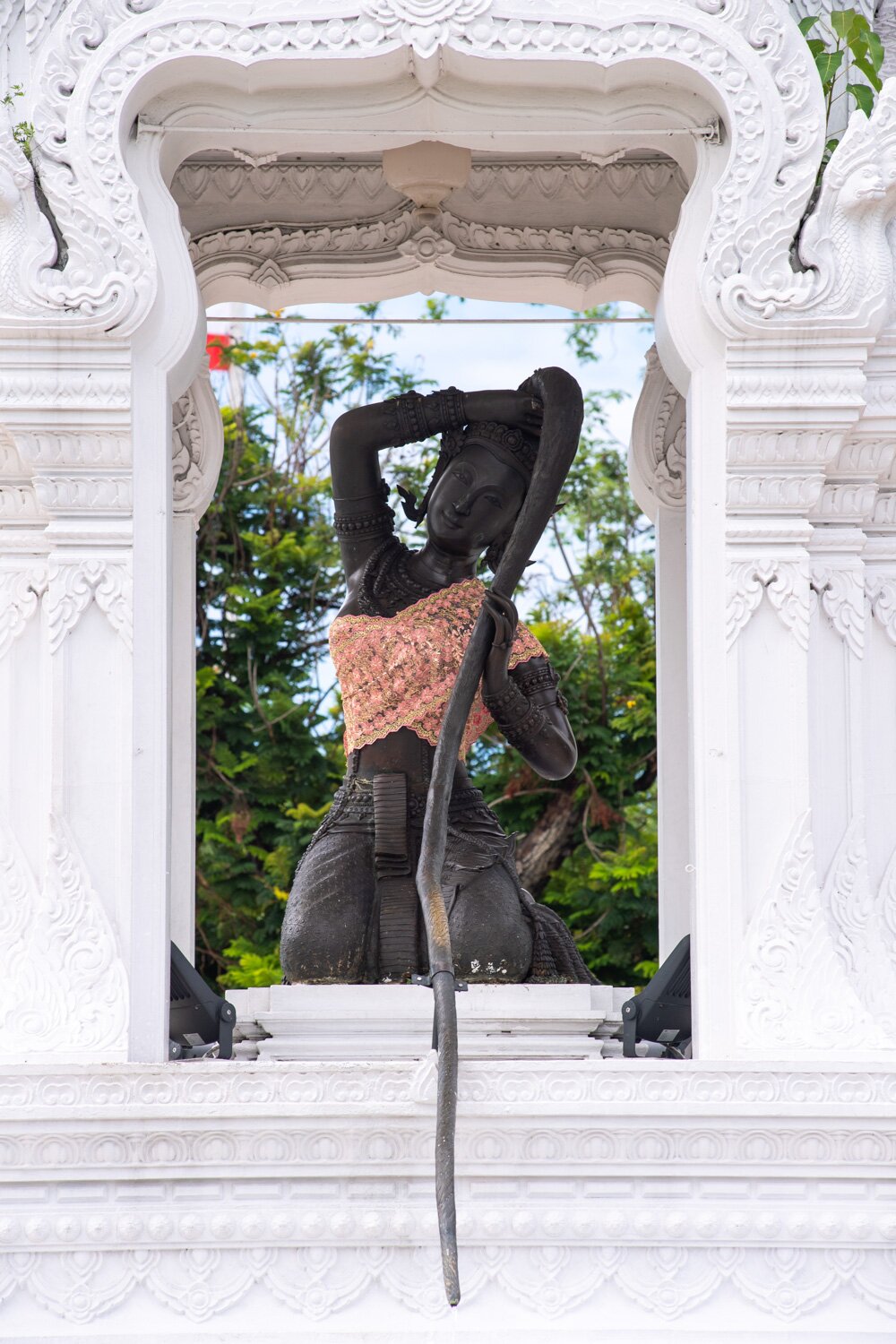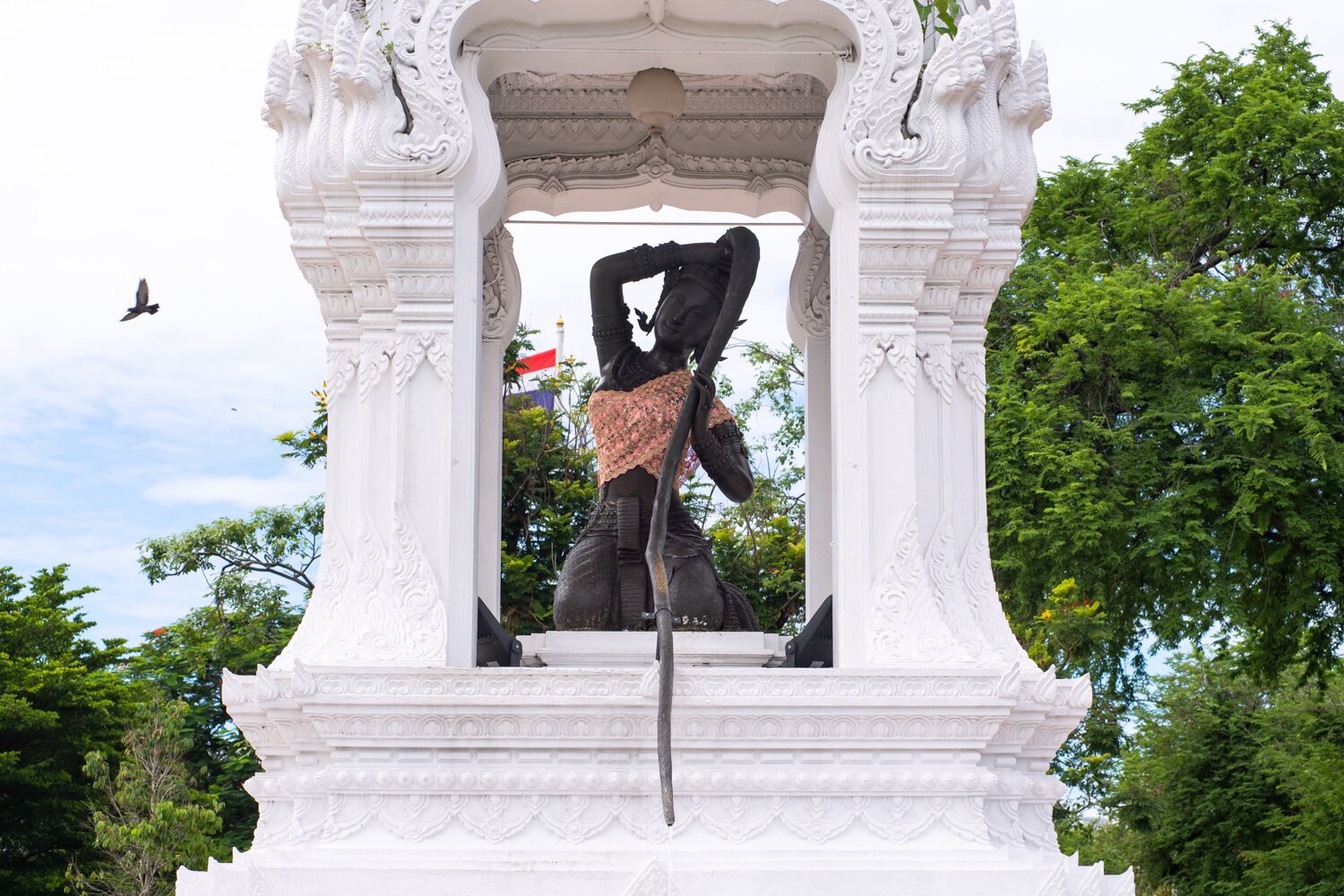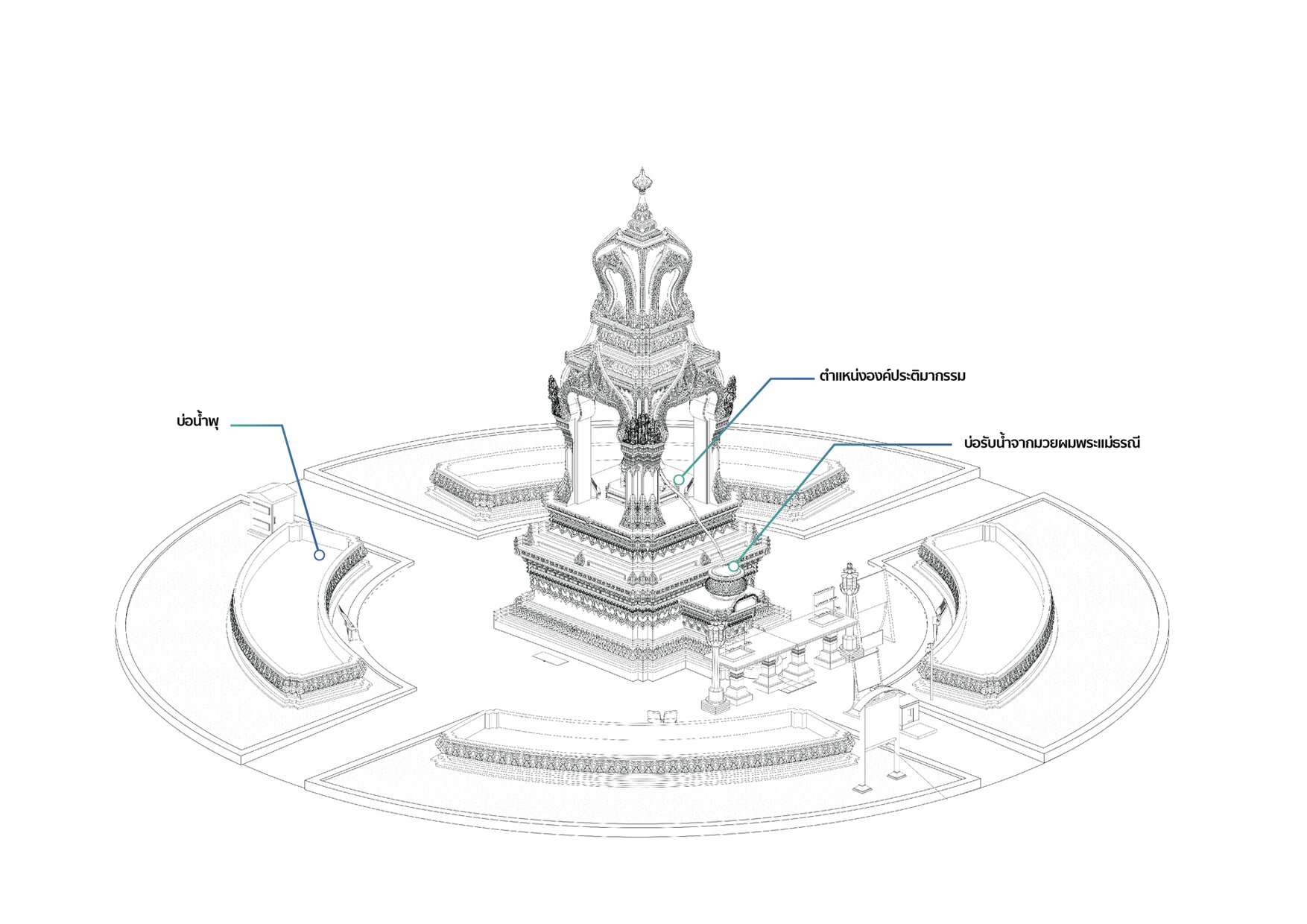The Uthokkathan (Mother Earth Goddess squeezing her hair) was an initiative of Queen Mother Sri Bajrindra to provide drinking water to passers-by at the time that tap water first came to Bangkok. King Rama VI who was the Crown Prince at the time, suggested to the Queen Mother to build the statue of the Mother Earth Goddess squeezing her hair with drinking water flowing out of the tip of the statue’s hair.
The statue was designed by Prince Narisara Nuwattiwong while the arched roof structure was designed by Phraya Jundarangsan (Plub). The construction received financial support from Queen Mother Sri Bajrindra and cost Bt16,437.
The opening ceremony was held on 27 December 1917 - the Queen Mother’s birthday. She appointed Chaophraya Yommarat (Pan Sukhum), Minister of the Metropolitan Department, to preside over the opening ceremony on her behalf. In the letter that Queen Mother Sri Bajrindra sent to Chaophraya Yommarat, it stated:
“Tomorrow, I will hold a merit-making ceremony to celebrate my birthday. I ask you to preside over the opening ceremony of the Uthokkathan for which I have financially sponsored the construction. The statue is located near the Phan Phiphop Lila Bridge. I want to donate a source of drinking water to the public for our fellow citizens to quench their thirst and seek relief from the heat. The facility will be available for all.”
The word “Uthokkathan” means giving water as alms. Giving water as alms was a tradition in Thai society. People placed a water jar and a dipper in front of their house. It was understood that any passer-by could drink the water as the house owner had provided it as an offering. The statue of Mother Earth Goddess squeezing her hair is an extension of that tradition, and an example of the compassion the royal family had for their people.
Today, the Uthokkathan or the statue of Mother Earth Goddess squeezing her hair has become a sacred place where people pay respects. Some people gild it with gold leaf while others pay respects with flowers as they believe that the water from the statue is holy water. Thus the statute is viewed more as a place of worship or a temple to the goddess, rather than merely a monument.




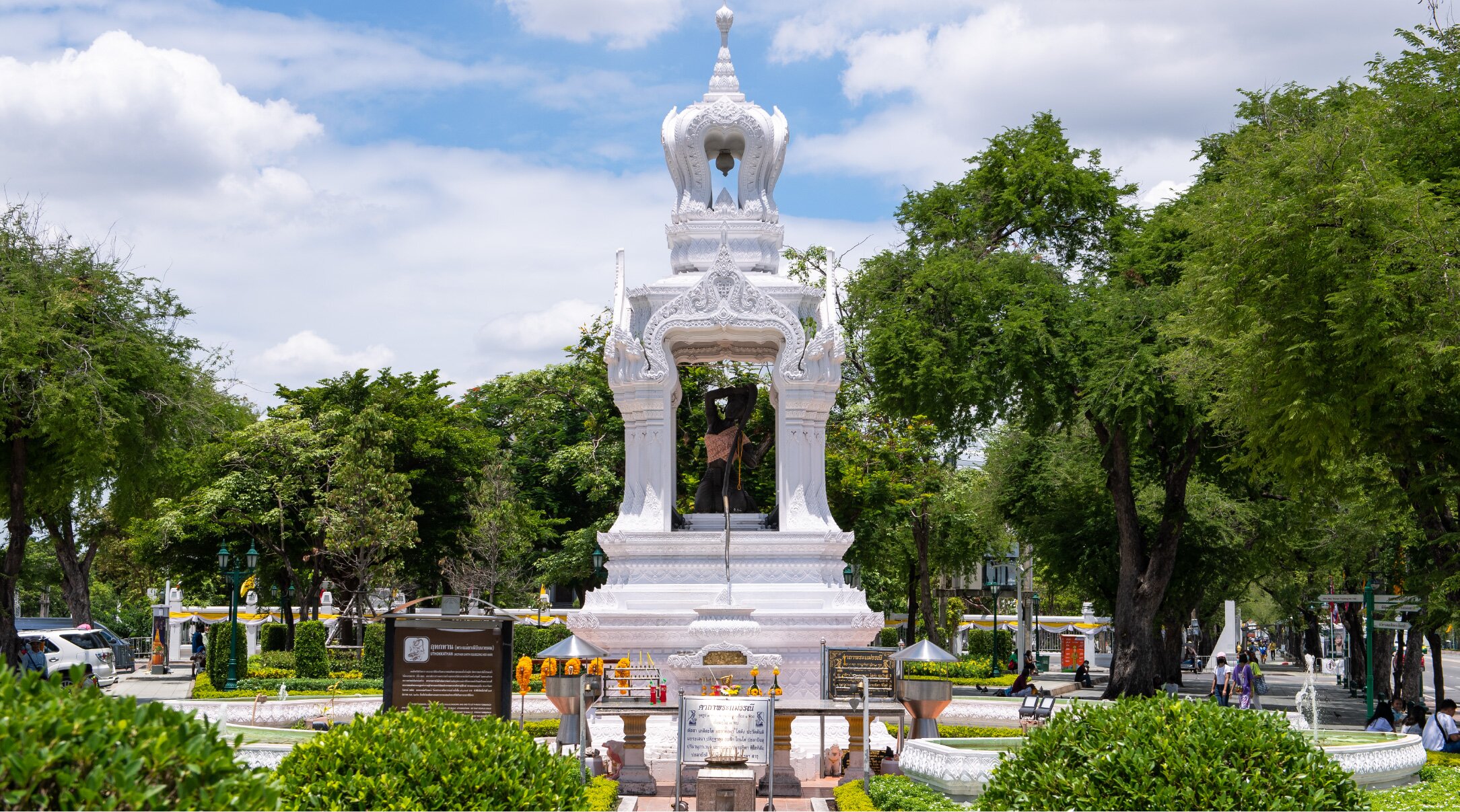
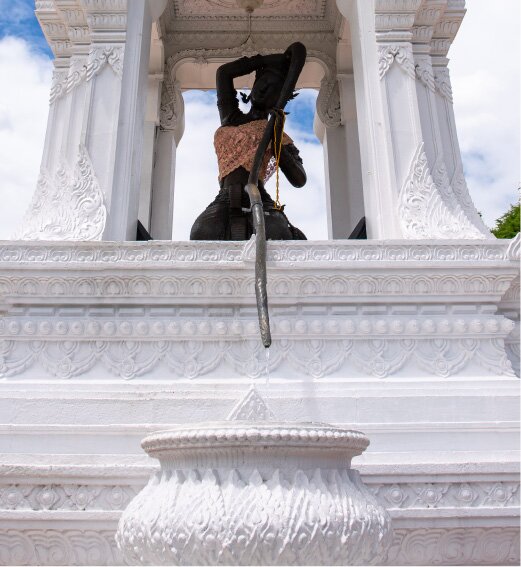
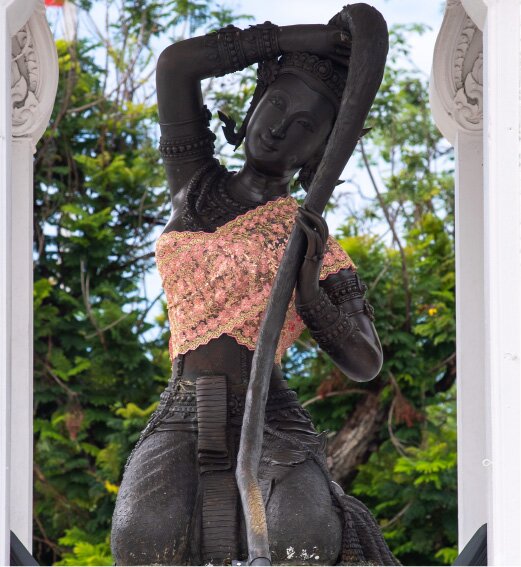
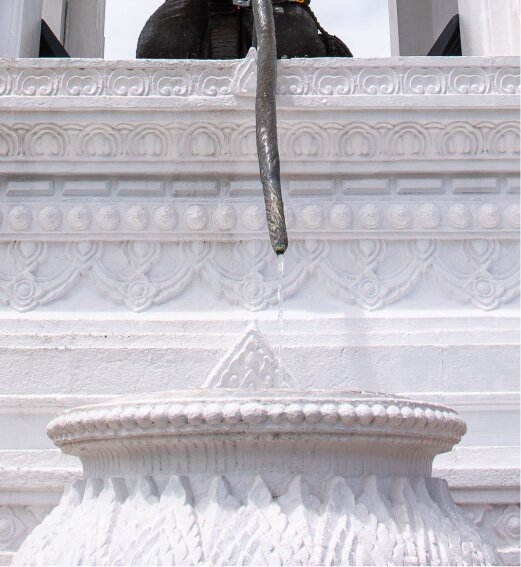
.jpg)
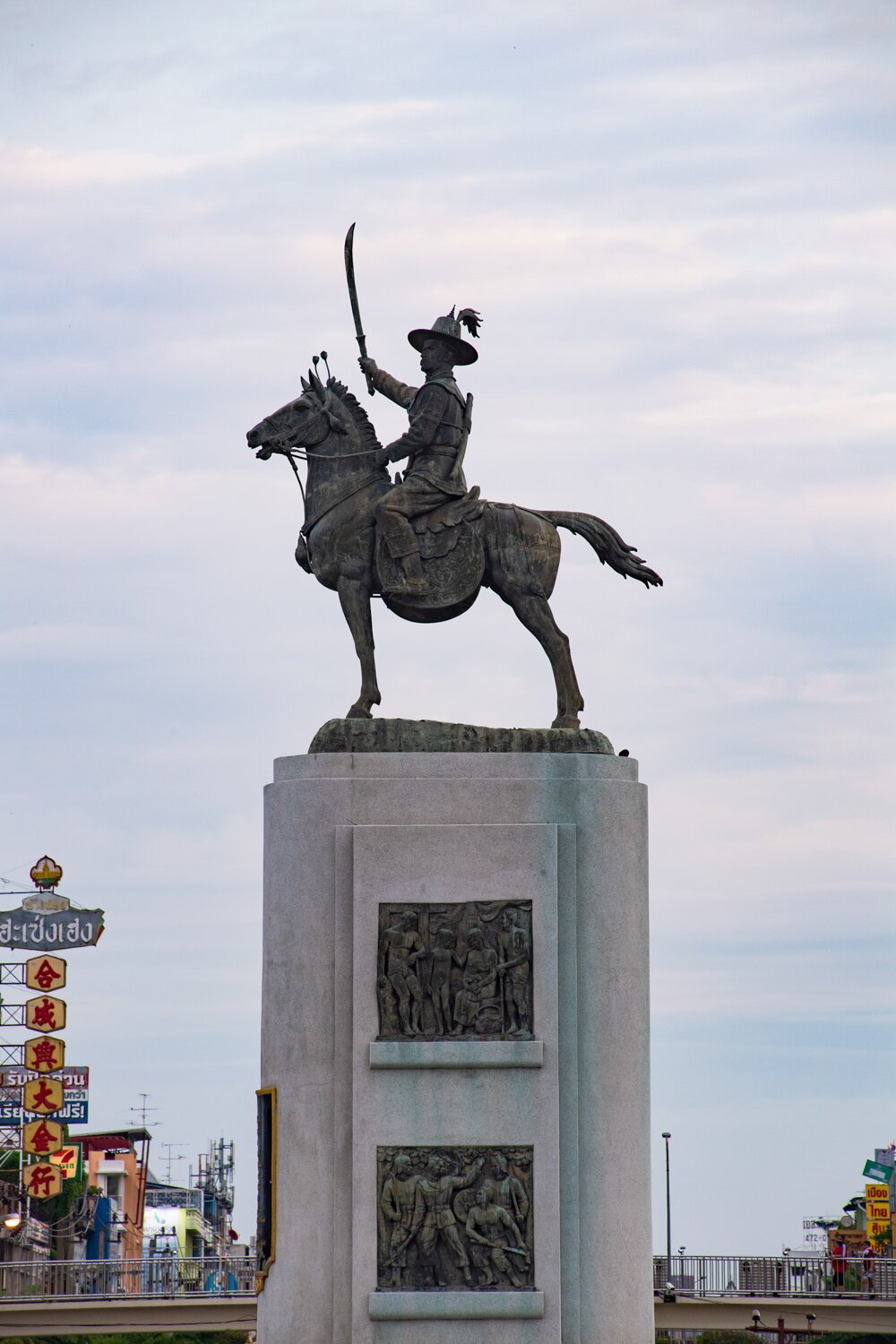
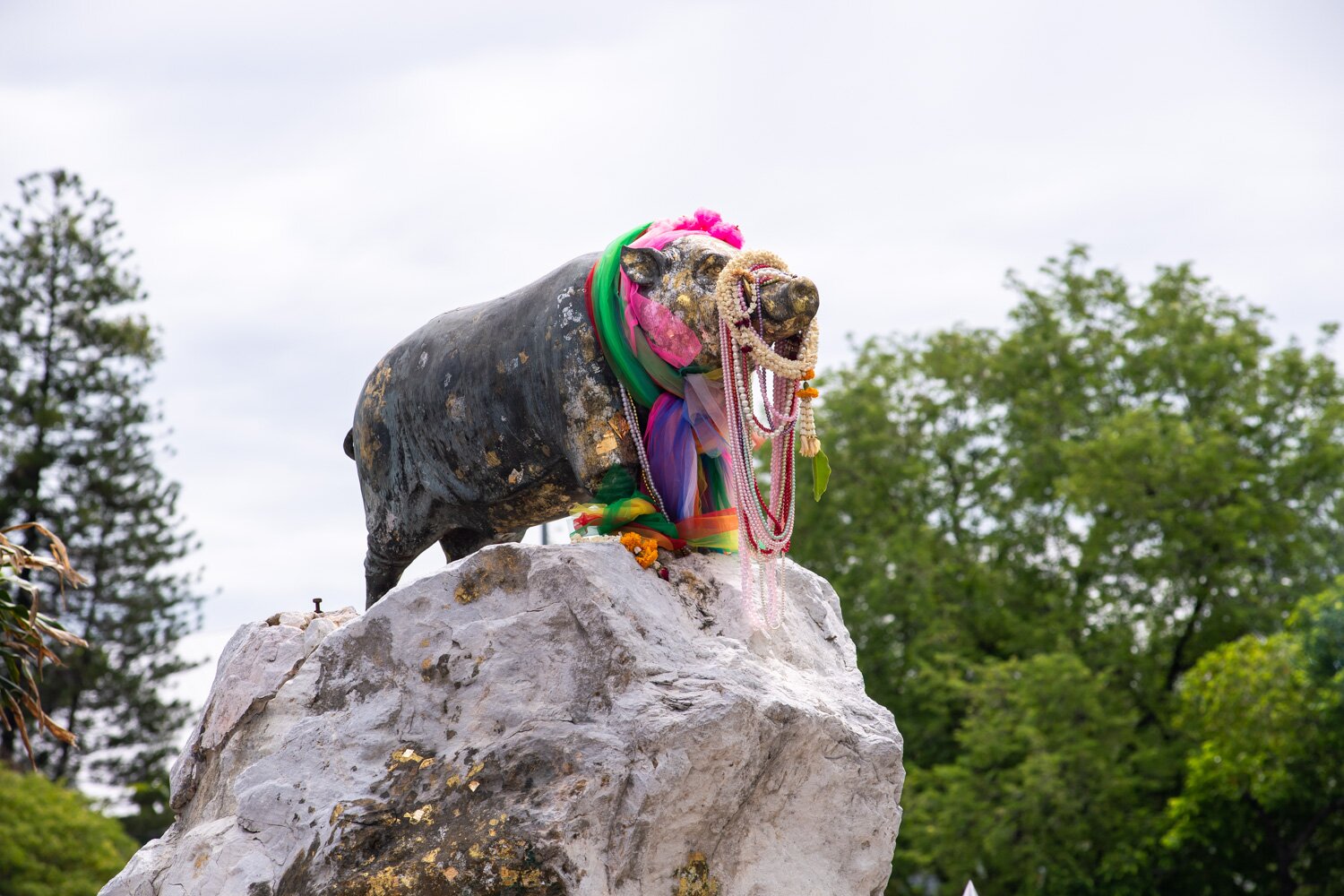
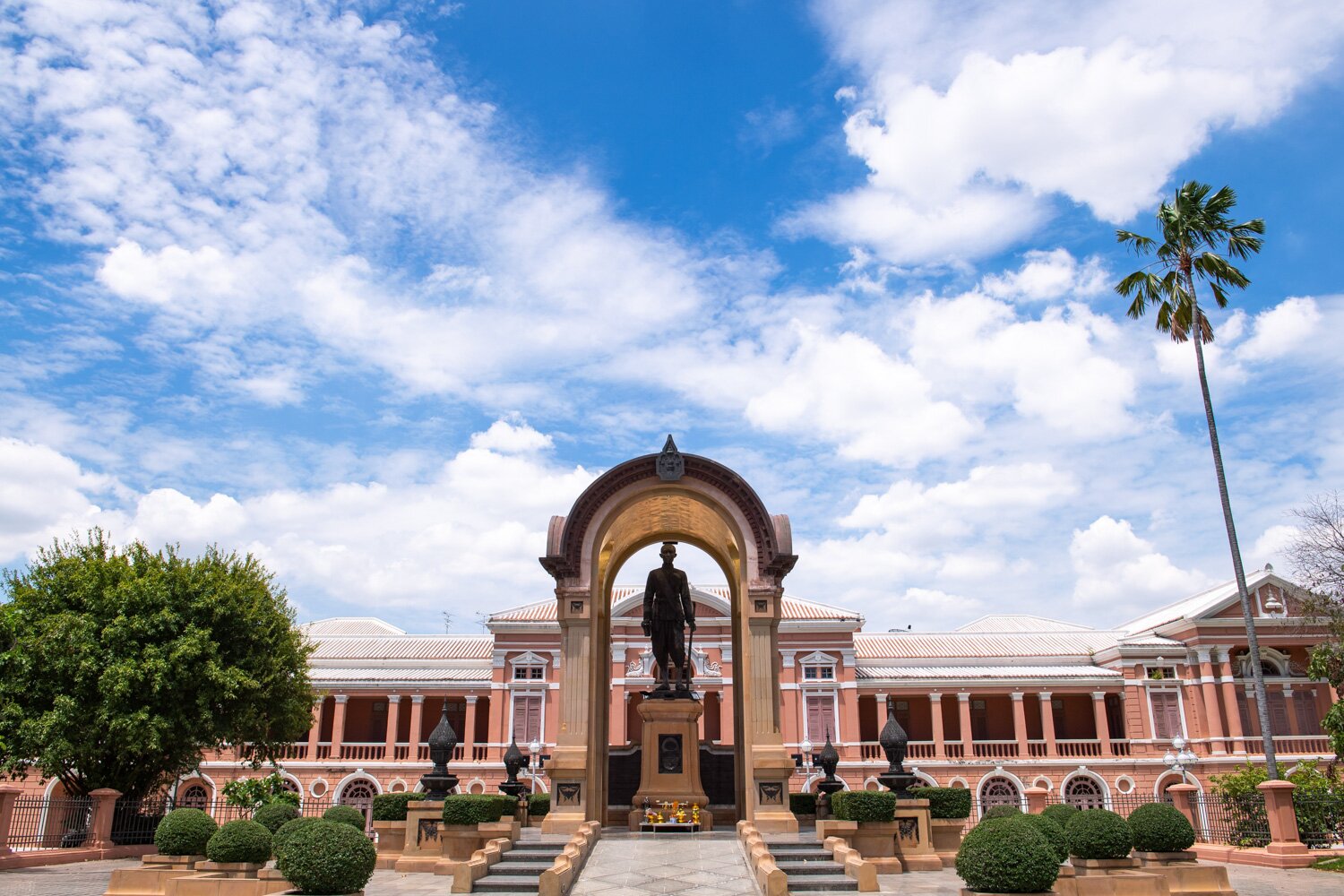
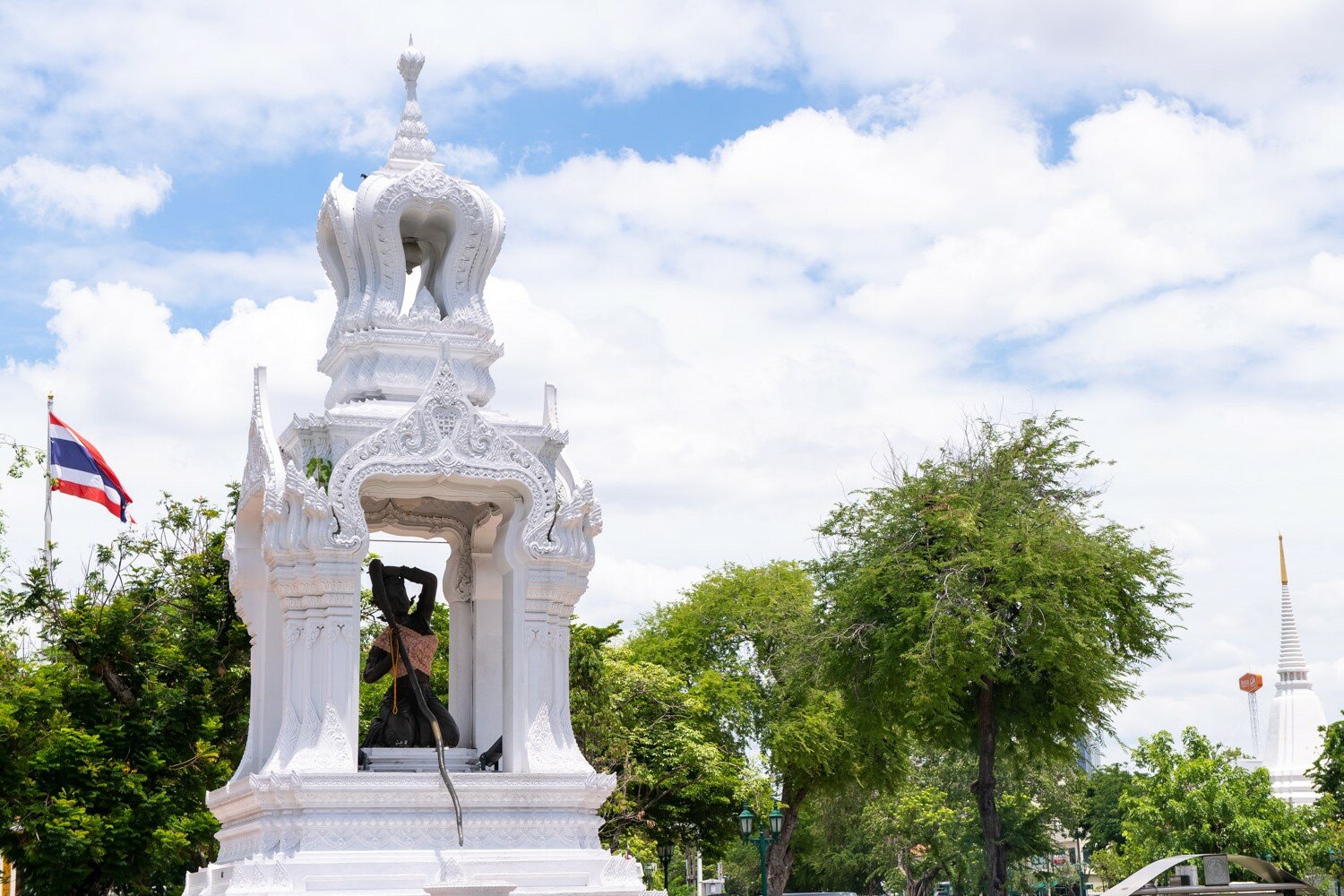

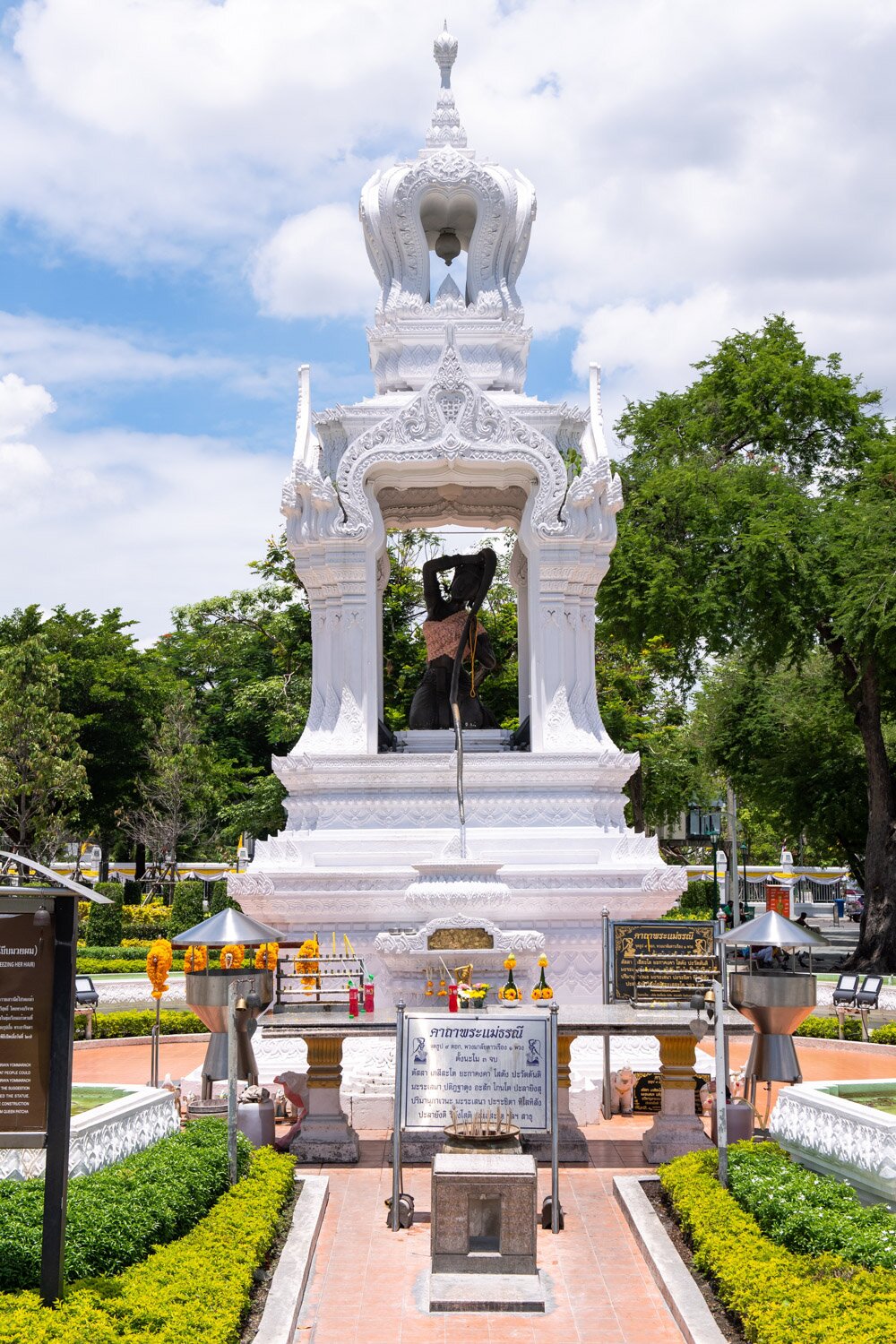
.jpg)
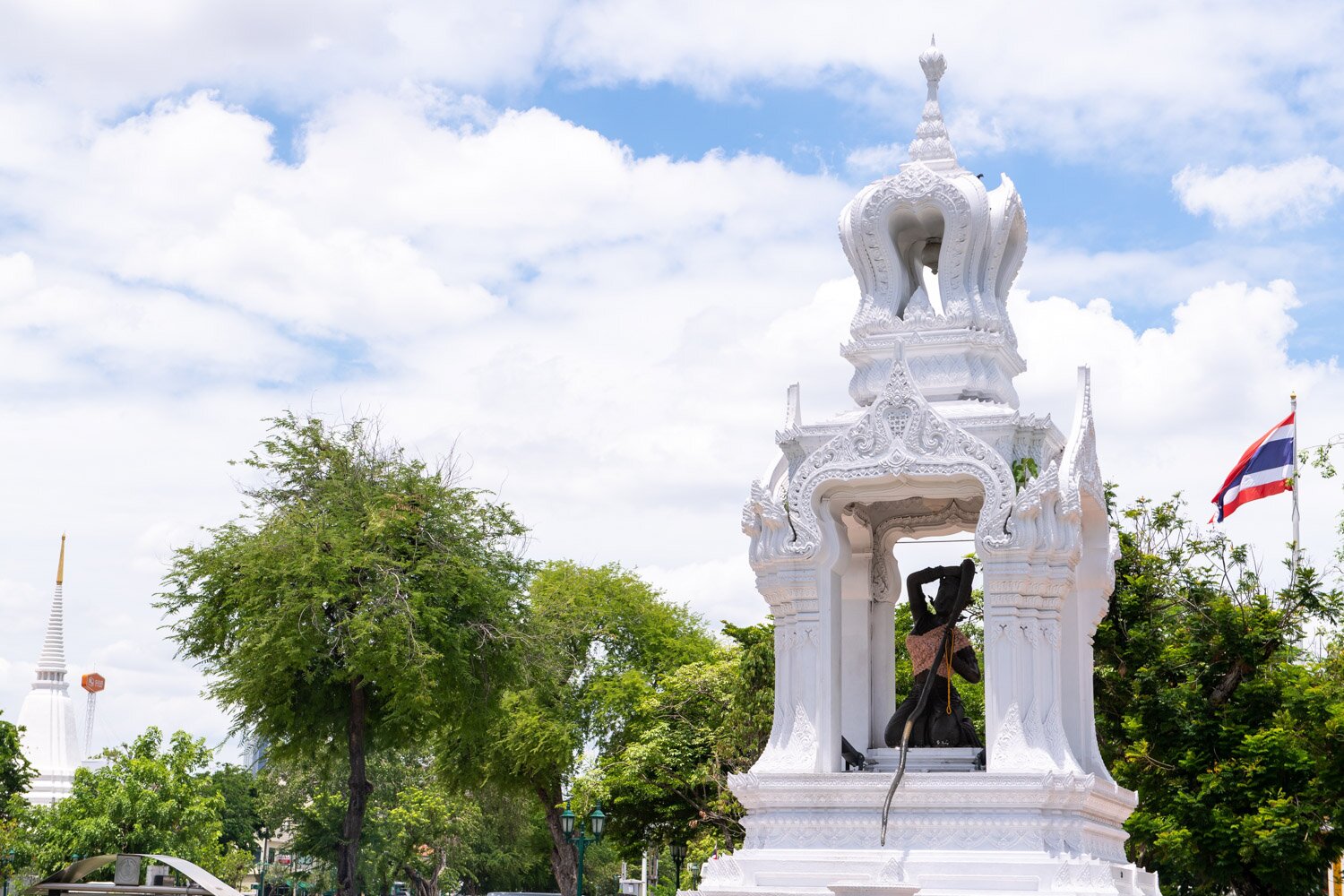
.jpg)
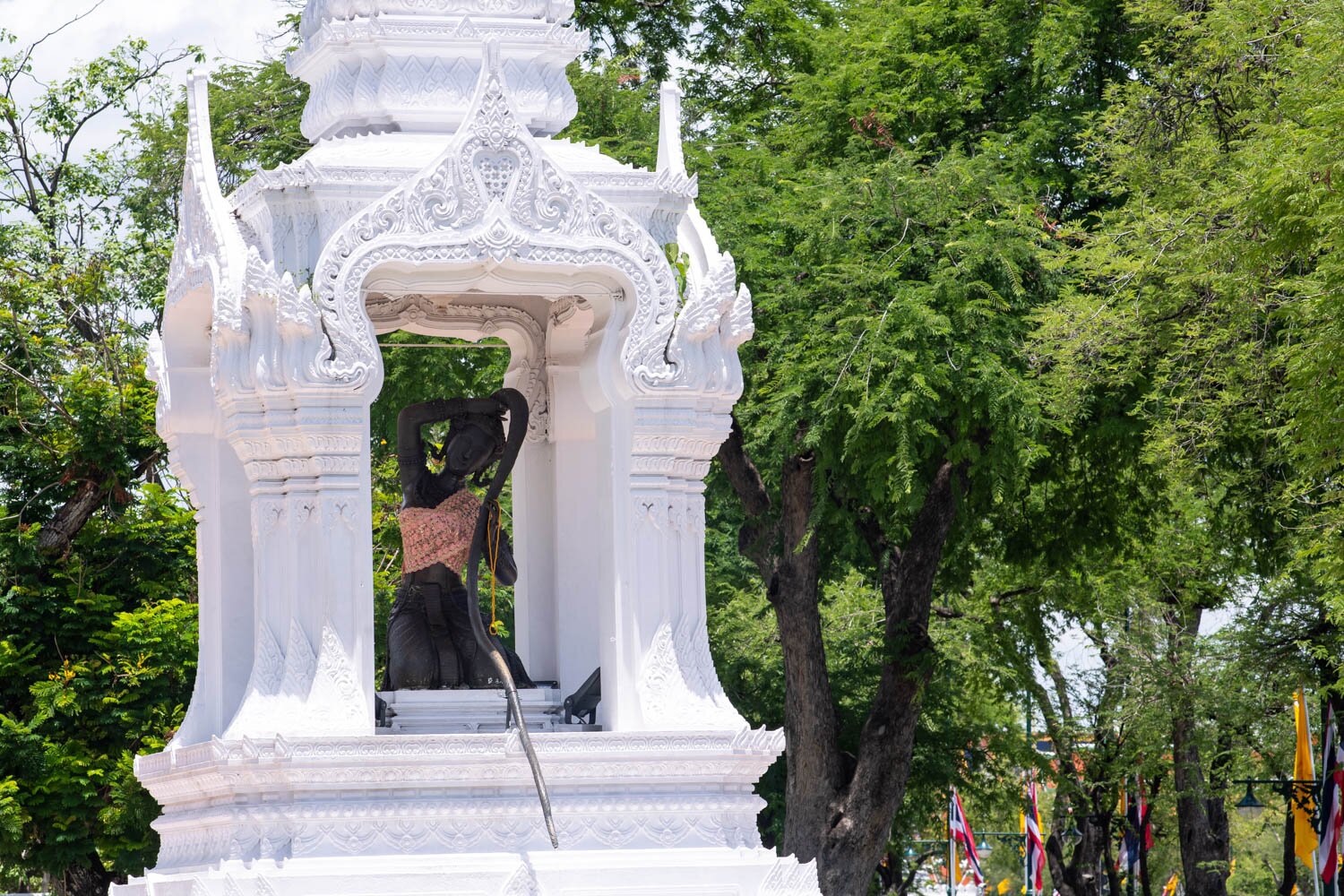
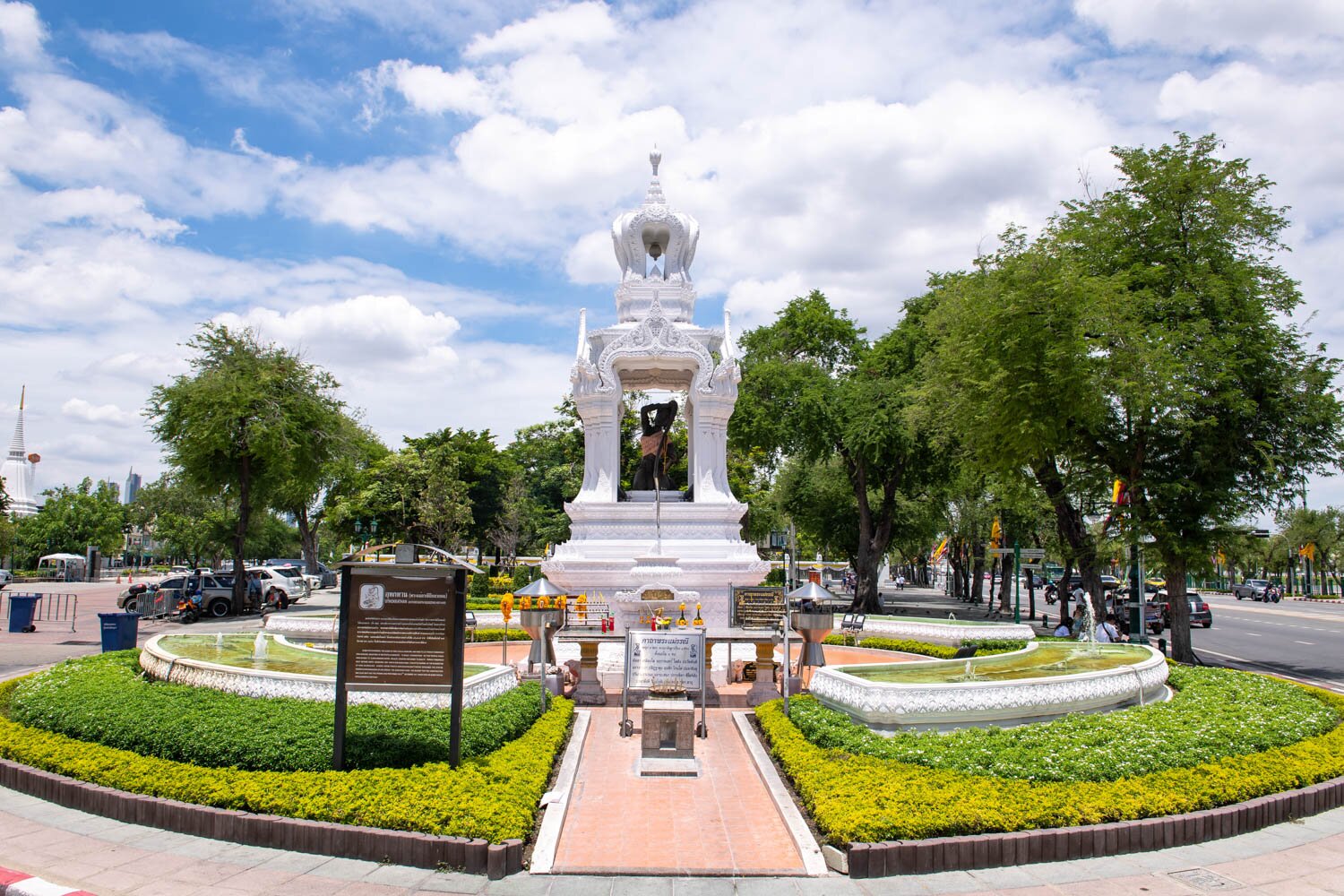

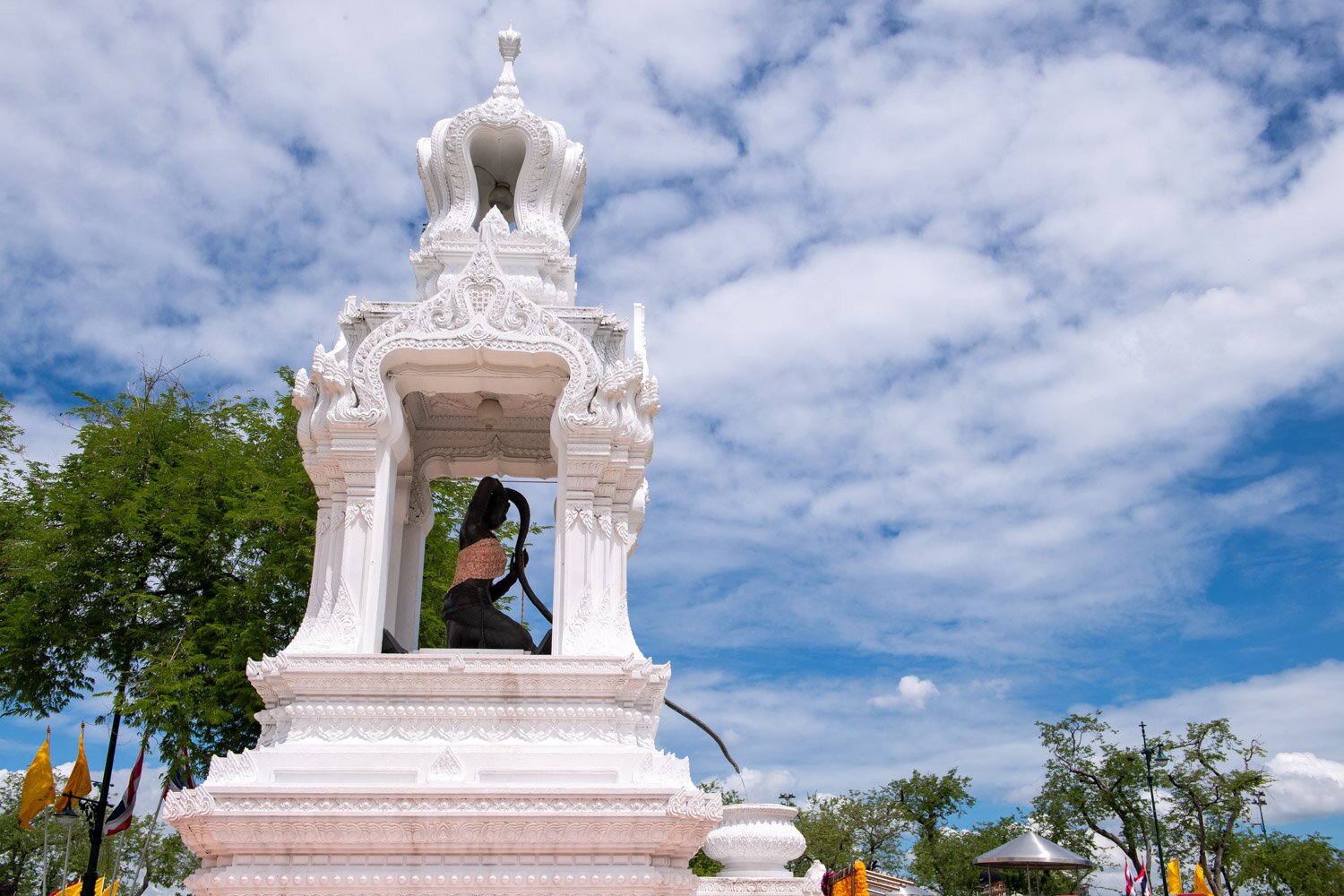
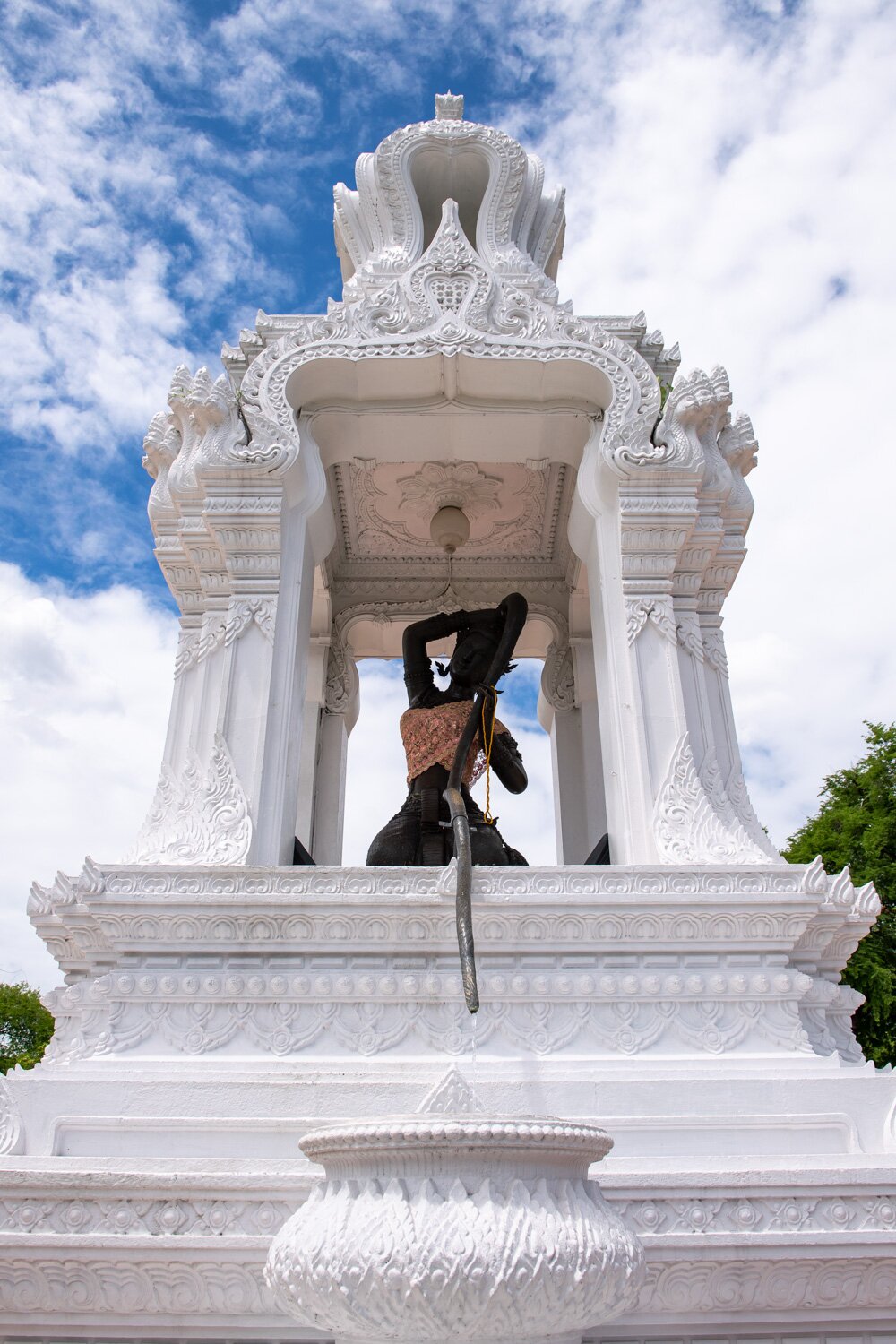
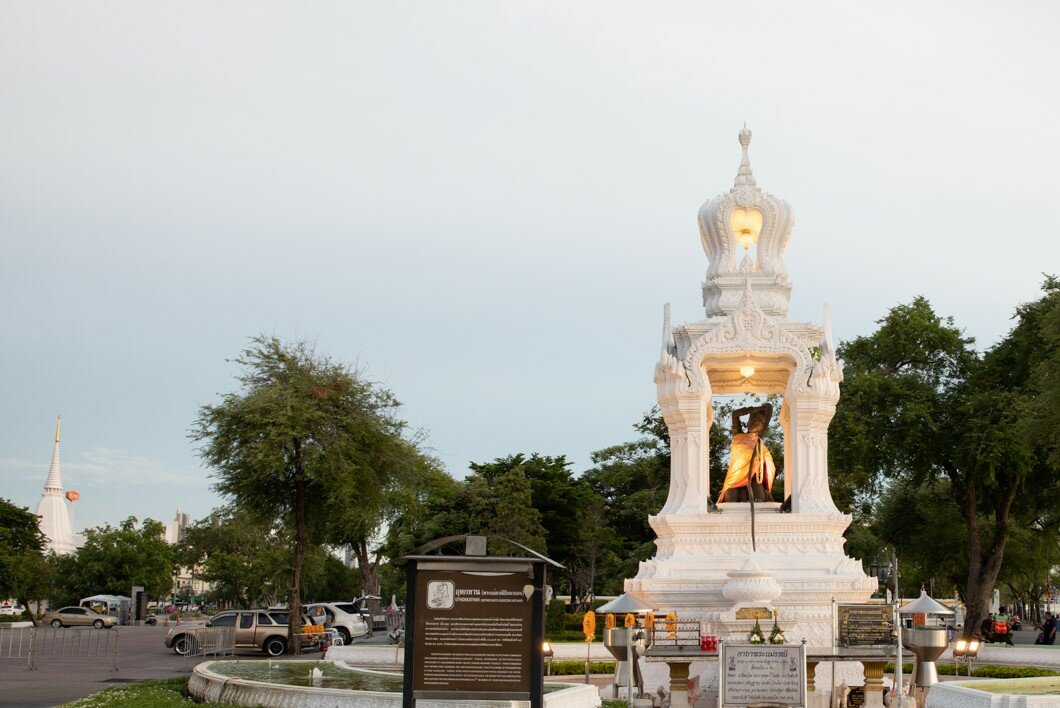

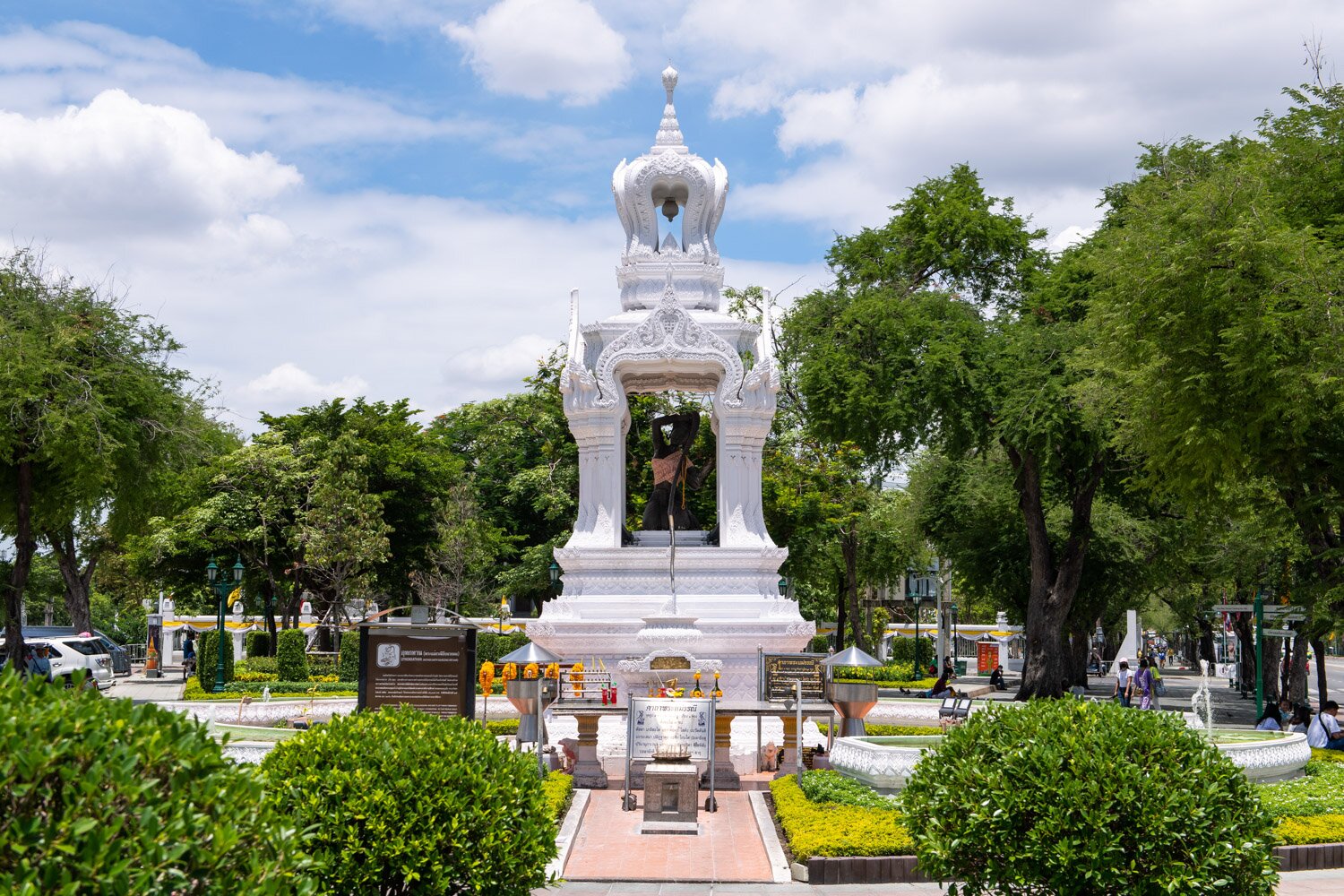

.jpg)
.jpg)
